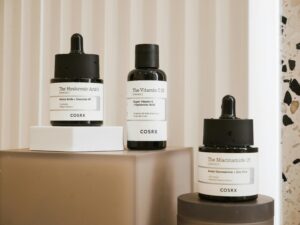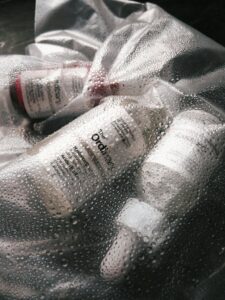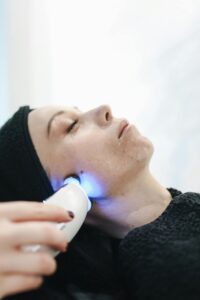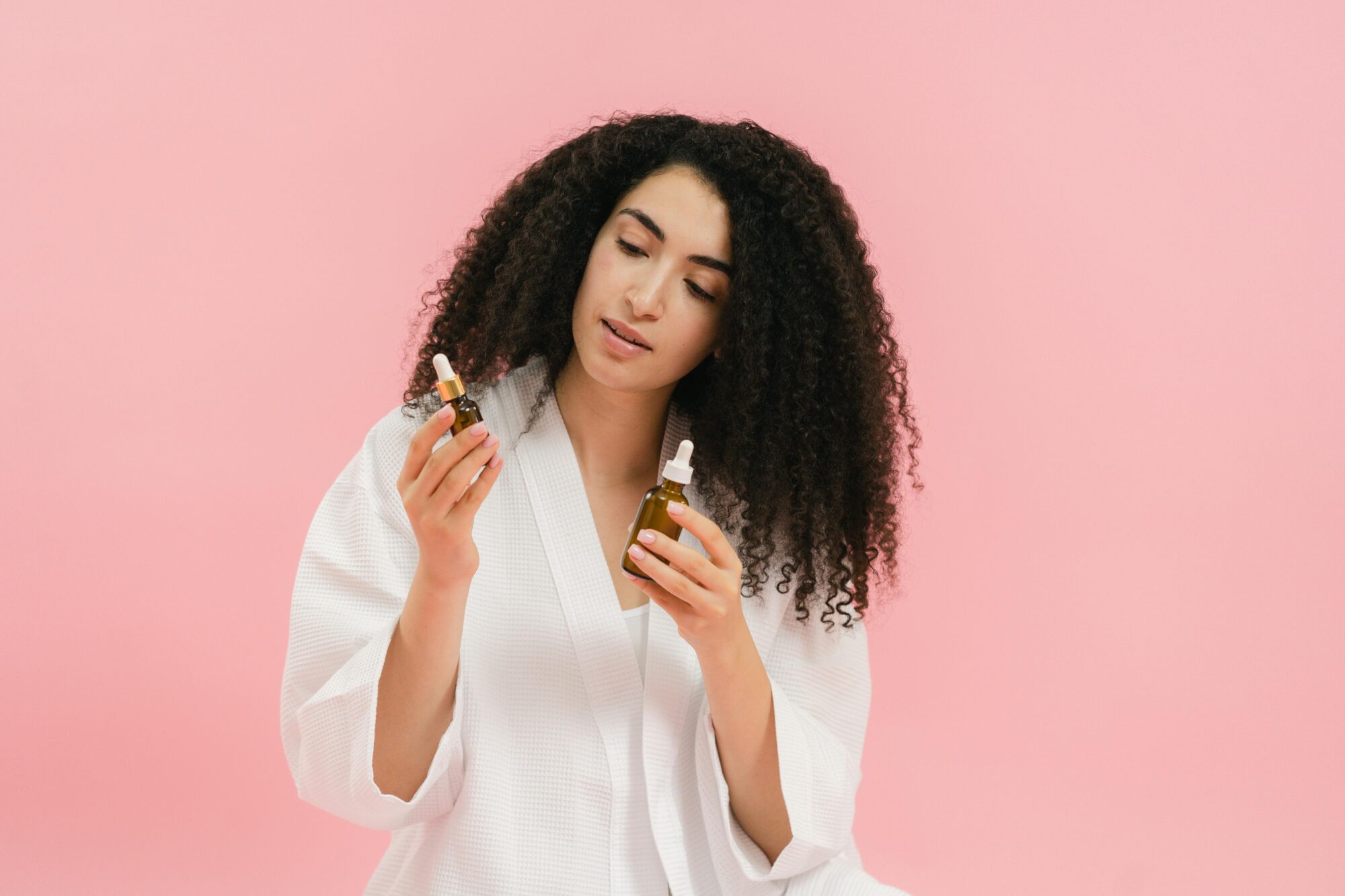If you’ve ever looked in the mirror and noticed dark spots that weren’t there before, welcome to the world of hyperpigmentation. It’s that annoying skin issue that makes you wonder if your face is plotting against you. But don’t worry, you’re not alone, and yes—there are solutions!
Hyperpigmentation happens when your skin produces too much melanin (the pigment responsible for your skin color), and it can be triggered by many things: sun exposure, hormones, acne scars, or even just bad luck. While it’s harmless, it can be frustrating—especially when it feels like those stubborn spots refuse to budge. So, let’s talk about what actually works to get rid of it—and what’s just a waste of time and money.
What Works: Proven Ways to Treat Hyperpigmentation

1. Sunscreen – Your Skin’s Best Friend
If you’re not wearing sunscreen daily, you might as well be giving your dark spots VIP treatment. The sun makes hyperpigmentation worse, no matter what kind of treatments you try.
✔ What to do: Use a broad-spectrum sunscreen with SPF 30 or higher every single day (yes, even if it’s cloudy or winter).
✔ Bonus tip: If you have sensitive skin, look for a mineral sunscreen with zinc oxide or titanium dioxide.
✔ Extra protection: Reapply sunscreen every two hours if you’re spending time outdoors, and wear a wide-brimmed hat for extra protection.
“But I don’t like the greasy feel!” – Guess what? Neither does your future wrinkle-free self, but you’ll both survive. There are plenty of lightweight, matte sunscreens that don’t feel sticky.
2. Vitamin C – The Brightening Hero

Vitamin C isn’t just for boosting your immune system—it also helps fade dark spots, promotes collagen production, and protects your skin from damage.
✔ What to do: Look for a vitamin C serum with at least 10-20% L-ascorbic acid (the most effective form). Apply it in the morning before sunscreen.
✔ What to expect: It works gradually, so don’t expect overnight magic, but with regular use, your skin will look brighter and more even-toned.
✔ Pro tip: Pair vitamin C with vitamin E and ferulic acid for enhanced benefits.
“Can I just rub an orange on my face?” – No, that’s not how this works. Stick to a well-formulated serum!
3. Retinoids – The Skin Renewal Experts

Retinoids speed up cell turnover, which means your dark spots fade faster as fresh skin comes to the surface.
✔ What to do: Start with an over-the-counter retinol and work your way up to prescription-strength tretinoin if needed.
✔ Important: Use it at night and always wear sunscreen during the day—retinoids make your skin more sensitive to the sun.
✔ Extra tip: Retinoids can be drying, so use a moisturizer with hyaluronic acid or ceramides to keep your skin hydrated.
“I used it once and my skin freaked out!” – Yep, that’s normal. Start slow (2-3 times a week) and use a good moisturizer to avoid irritation.
4. Chemical Exfoliation – Goodbye, Dead Skin
Acids like AHAs (glycolic acid), BHAs (salicylic acid), and PHAs help remove dead skin cells, making your skin brighter and more even-toned over time.
✔ What to do: Use an exfoliating toner or serum 2-3 times a week to avoid over-exfoliation (which can make things worse!).
✔ Best ingredients: Glycolic acid for overall brightness, salicylic acid for acne scars, and lactic acid for sensitive skin.
✔ Pro tip: If you have sensitive skin, try mandelic acid, which is gentler but still effective.
“So… can I just scrub my face harder?” – No! Scrubbing like your life depends on it won’t help—it’ll just irritate your skin. Be gentle!
5. Niacinamide – The Underrated Superstar
This ingredient doesn’t just help with hyperpigmentation—it also reduces redness, controls oil, and strengthens your skin barrier.
✔ What to do: Look for serums with 5-10% niacinamide and use them in your morning or nighttime routine.
✔ Bonus: It plays well with other ingredients, so you can use it alongside vitamin C, retinoids, and exfoliants.
✔ Extra tip: Niacinamide can help reduce post-inflammatory hyperpigmentation from acne.
6. Professional Treatments – The Heavy Lifters

If at-home treatments aren’t cutting it, dermatologists offer stronger options:
✔ Chemical Peels – Remove layers of skin to fade dark spots. ✔ Laser Treatments – Target deep pigmentation, but expensive. ✔ Microneedling – Helps break up pigmentation and boost collagen. ✔ Hydroquinone – A prescription skin-lightening agent that’s very effective but should be used under medical supervision.
These treatments work, but they can be pricey. If you go this route, make sure you see a professional and follow their aftercare advice.
What Doesn’t Work: Save Your Time and Money
1. Lemon Juice – Just… No
Lemon juice is often suggested as a DIY fix, but it’s too acidic and can actually irritate and damage your skin. Plus, it makes your skin more sensitive to the sun, which is the last thing you want!
“But my grandma swears by it!” – Your grandma also probably didn’t have access to well-formulated skincare. Stick to science, not citrus.
2. Rubbing Raw Potato on Your Face
Some people say potatoes can lighten dark spots. There’s zero scientific evidence for this. Unless you want to smell like a salad, skip it.
3. Coconut Oil – Not Your Skin’s Friend
Coconut oil is great for hair and body, but for your face? Not so much. It can clog pores and make hyperpigmentation worse. If you have acne-prone skin, keep it far, far away.
4. Expecting Results Overnight
Hyperpigmentation doesn’t disappear in a day. It takes patience and consistency. Stick to a routine for at least 8-12 weeks before expecting noticeable changes.
“But I want instant results!” – Unless you have a magic wand, you’ll have to wait like the rest of us.
Final Thoughts
Hyperpigmentation can be frustrating, but with the right approach, it’s totally manageable. Stick to sunscreen, use brightening ingredients like vitamin C and niacinamide, and be patient. If all else fails, a dermatologist can help with stronger treatments.
Now, go forth and glow! ✨
